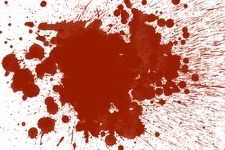I was inspired by CBC Ideas podcast “Eureka! Mapping the Creative Mind” to discuss creativity this week. If you have more technological interests, CBC Spark also discussed creativity this weekend. Mainly, I’m distilling the current research into creativity itself, and we’ll talk about applications to both theatrical combat and real fighting at the end.
Creative Process
We may think of creativity as a moment of genius, and that there are certain "creative people" like artists who are special. And these myths can hold you back, especially when a lot of our role models for geniuses are white males like Sherlock Holmes, Nocola Tesla and Socrates. Anyone can be creative, and it's an important trait to cultivate in yourself, regardless of your job.
Lifehacker has an article called Demystifying the Muse, and here’s the 5 myths you should stop believing:
- Creativity is something you’re born with
- You can’t control when inspiration will strike
- You can’t teach true creativity (see above)
- Creativity happens in isolation (the lone genius)
- Creativity comes to those with time and means
Combining the research by Rex Jung and the Darwinian version: Blind variation selective retention (BVSR), we get a model process for creative breakthroughs that looks like this (order rearranged a bit to make it more clear in my opinion):
- Do your homework: immerse yourself in your subject by reading, practicing and observing others in your field
- Analogies help: try to think of metaphors
- Modify: take your ideas or those of others and combine them, create variations, use different elements
- Quantity matters: try as many combinations of ideas as you can
- Ideas evolve: out of your variations, throw away the useless and “breed” the promising ones.
- Take a break: inspiration usually strikes when you’re relaxed and not directly looking at your problem. Take a walk, a warm bath or a nap.
- Verify: your personal insight may be just in your imagination. You have to prove it.
It's Tough
Human comfort is not required for creativity and thriving. A pearl cannot form without the irritation from a grain of sand.
The thing about artistic creativity is the paradox that you are forced to be more creative when you are given more constraints. Many beginners are annoyed by teachers who tell them that they must use a particular technique to express themselves rather than let their imagination run free.
Artists in the real world must almost always contend with constraints such as:
- Performance location
- Budget
- Time (the show date is fixed, or you only have a certain time-limit to prepare)
Sometimes not having constraints means that the artist’s imagination flies to every new idea and it becomes difficult to narrow the focus of a piece. Knowing this, there was a project in Vancouver in which different theatre companies challenged each other with constraints. Progress Lab called the series “Obstructions”. Here’s the outline from Progresslab.ca:
Inspired in part by The Five Obstructions by Jørgen Leth and Lars Von Trier, the core artists of each participating company will submit, a few at a time and under a cold spotlight, to a list of obstructions delivered by a shadowy emcee. The companies will then be commanded to create their next production around those limitations. The obstructions for each company have been developed in secret by their peers – a custom-designed set of obstacles that will prompt each artist to adapt to a new approach to making theatre. Their individual tendencies toward form, place, style, theme, design, period, story are exposed and obstructed, spilling the artist’s bag of tricks all over the stage and out of reach.
Listen to Maegan Thomas’ piece about PL and Obstructions on CiTR.
So how does this apply to the things I teach professionally?
Stage Combat
Learning to control your body in space to create the various illusions for an audience can be a long process of physical mastery. But it really is only a start to your journey in creating the art of stage combat. It is another common myth that after taking a basic stage combat course, a student ought to be able to choreograph those moves into a fight. This myth is pervasive in the general theatre community, as evidenced by those theatre companies who hire fight directors with only a few workshops of training under their belt. It is even believed by many professional fight directors whose choreography is merely a string of techniques. To follow a path toward creative and exceptional stage combat, I encourage students to:
- Practice with many different partners
- Create new choreography all the time, not merely drilling technique
- Observe and practice different martial arts, and create novel solutions to make those techniques work on stage
Bartitsu and Competitive Combat
In the realm of self-defence and martial arts with a competitive practice, it is just as important to practice with different opponents and try every combination of techniques. Creativity within your fighting art can be your greatest asset. Follow the general creative pattern: immerse yourself in the details of your craft, explore every variation, and take breaks. When you have a breakthrough, test it against different opponents to see if it really works.
Sometimes giving yourself a constraint or a challenge is the best way to proceed towards creative solutions.
Creative Professionals
If you consider yourself a creative professional, you’ll want to make the creative process a part of your daily routine. An excellent resource on this subject is the website 99u.com and their books, including Manage Your Day-to-Day: Build your Routine, Find Your Focus, and Sharpen Your Creative Mind. There are too many insights to cite, but here’s an excellent quote from the chapter I was just reading:
“Like every beginner, I thought you could beat, pummel, and thrash an idea into existence. Under such treatment, of course, any decent idea folds up its paws, turns on its back, fixes its eyes on eternity, and dies.” — Ray Bradbury
